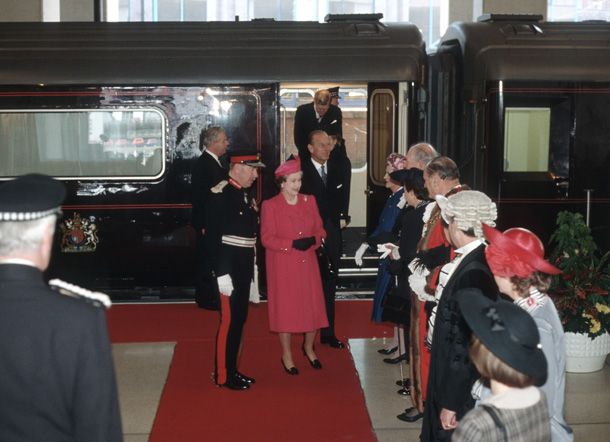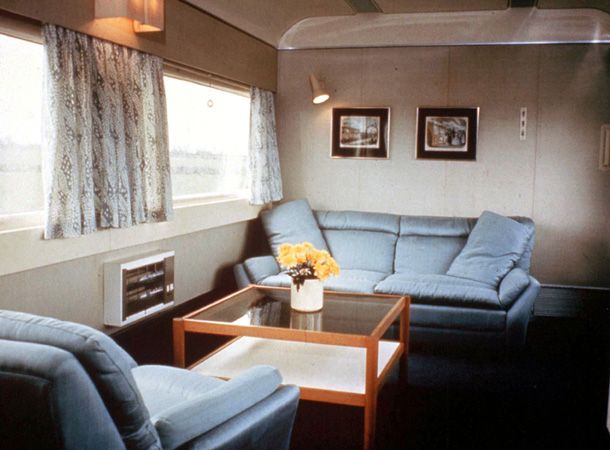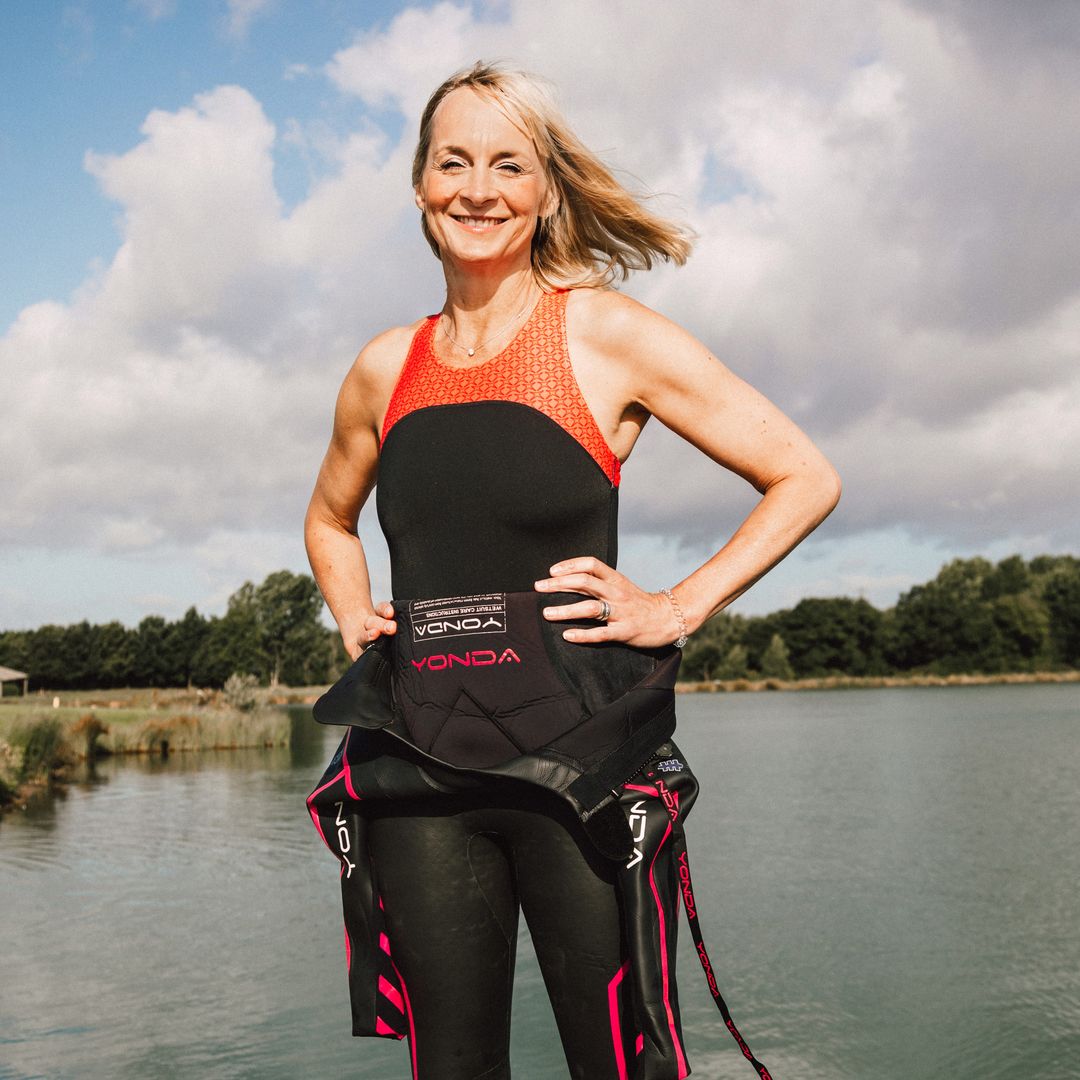The royal train that has transported the Queen and her entourage – corgis included – across Great Britain for more than 30 years may be coming to the end of the line.According to Sir Alan Reid, the Keeper of the Privy Purse, the train has between five to ten years of service left due to its need for repair.Replacing it is a "major decision", says the financial director of the royal household, and "the figures are quite staggering".
The current royal train – which dates back to the 1977 Silver Jubilee – contains private saloons for the Queen, the Duke of Edinburgh and the Prince of Wales. Additional wagons, like regular sleepers and First Class carriages, feed and accommodate staff.The locomotive originally boasted 14 carriages to provide a home from home for all the senior members of the royal family when they were on the road.
The Queen steps off the train accompanied by her corgies in 1970
By the late Nineties though, cutting down on costs – the monarchy has managed to halve its costs over the past 20 years – meant less wagons.
The number of saloons was reduced to nine, and use limited to the Queen, her husband the Duke of Edinburgh and Prince Charles.
The Queen's carriage boasts a bath, as well as a desk for her to work on her affairs, and a telephone.
It also features single beds which run lengthways in the train, ensuring stability and a sound night's sleep. Prince Philip's separate saloon, meanwhile, contains a shower.
Saloons are simply furnished yet comfortable
The Queen was reported to have wept at the decommissioning ceremony, which took place in 1997, and Prince Charles is said to have a picture of Britannia in his saloon on the royal train.
Now, it seems, the train may join Her Majesty's royal yacht Britannia, which is moored as an exhibition ship at Leith’s Ocean Terminal in Edinburgh, Scotland, in retirement.
The royals have moved with the times as much as budget permits. In 2007 the rolling stock made an environmentally friendly turn, becoming powered by eco-friendly bio-fuel.











